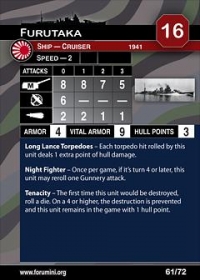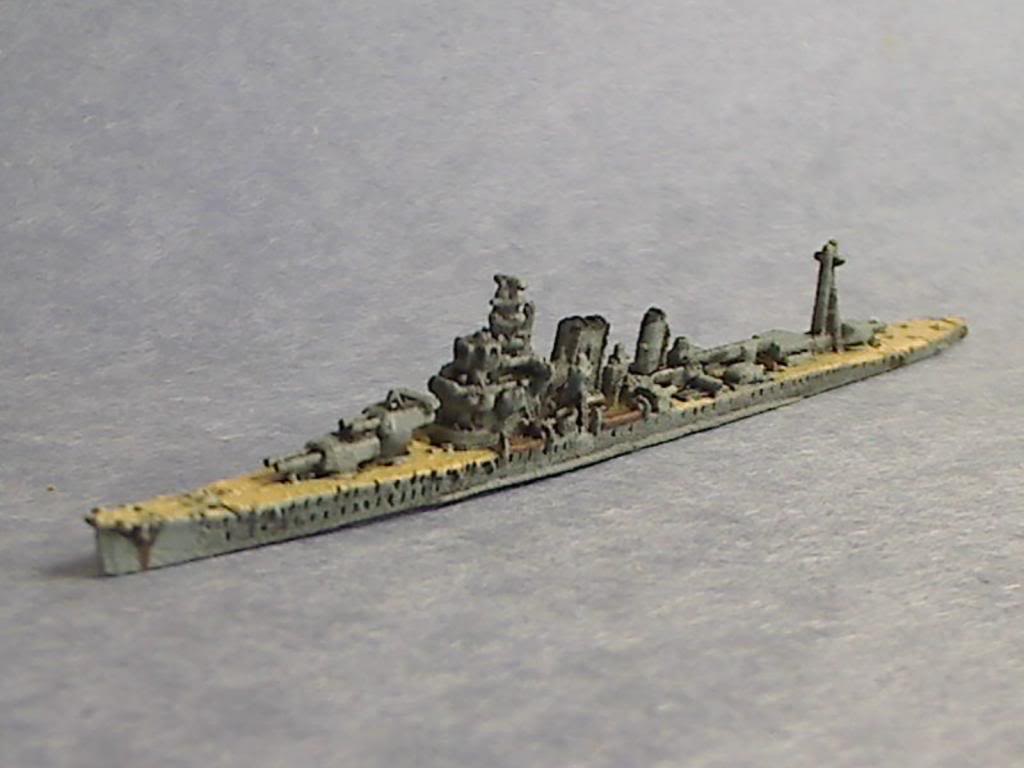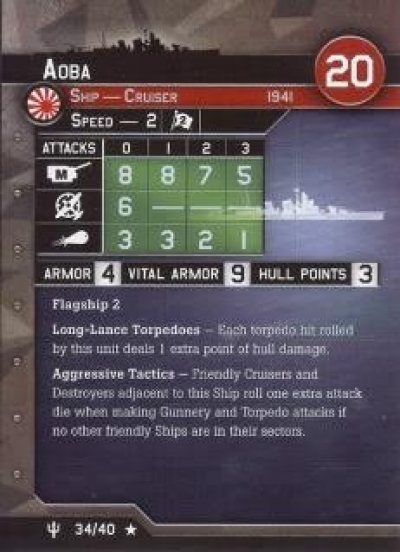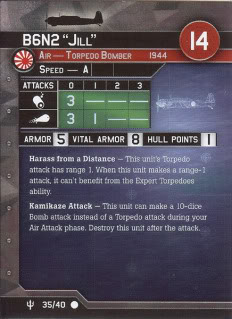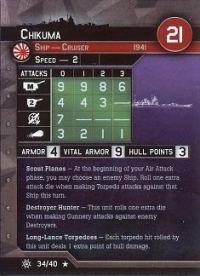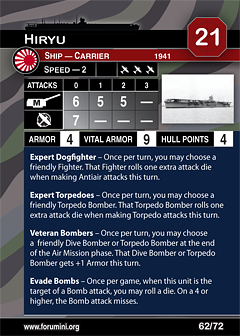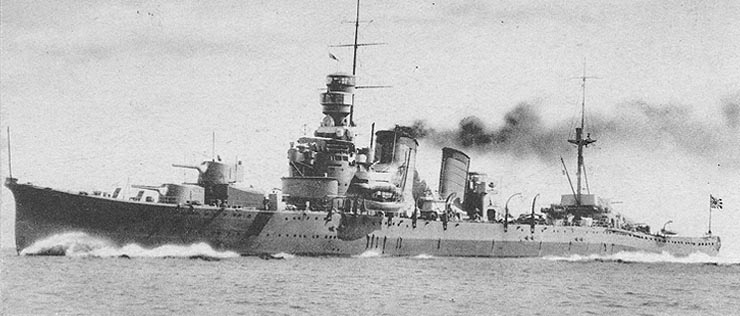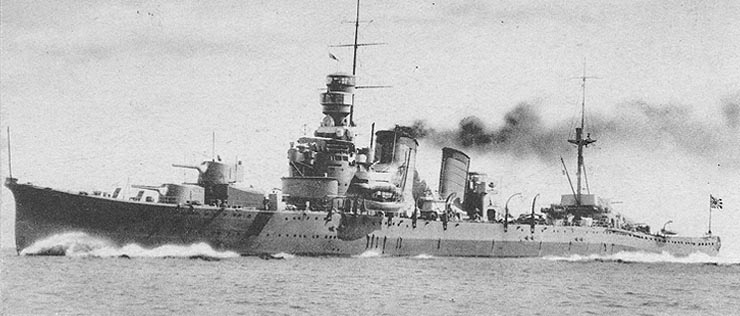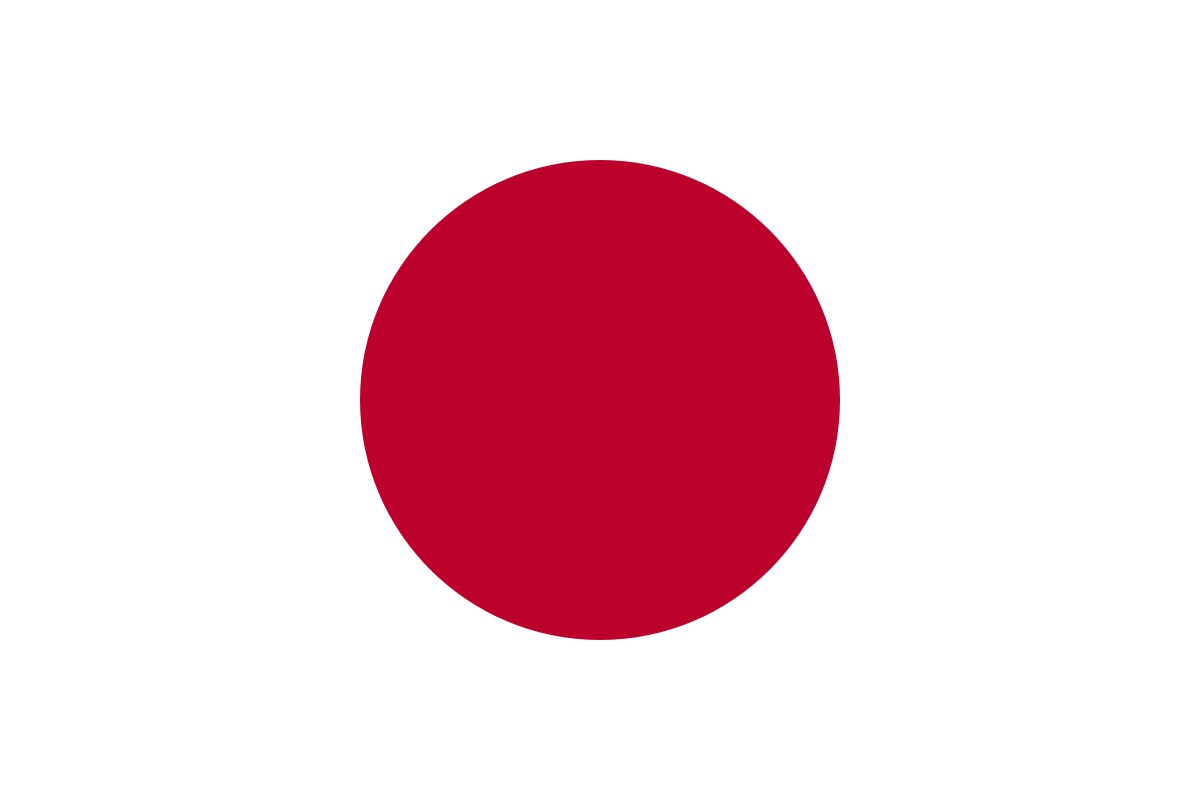Prototype: Furutaka (古鷹 重巡洋艦 Furutaka jūjun'yōkan) was the lead ship in the two-vessel Furutaka-class of heavy cruisers in the Imperial Japanese Navy. The ship was named after Mount Furutaka, located on Etajima, Hiroshima immediately behind the Imperial Japanese Navy Academy. It was commissioned in 1926 and was sunk 12 October 1942 by USS Salt Lake City and Duncan at the Battle of Cape Esperance.
Class History: The Furutaka-class cruisers were the first heavy cruisers in the Imperial Japanese Navy (IJN), also referred to as 'A class' cruisers by the IJN. Like the cruiser Yūbari, their design was the work of Constructor Captain Yuzuru Hiraga, assisted by Lt. Cmdr. Fujimoto Kikuo.
Designed to beat the U.S. Omaha class and the British Hawkins-class cruisers, they were as fast as the Omahas (and nearly 4 knots faster than the Hawkins class), while firing a heavier broadside, and carrying a larger torpedo battery than either one.
Their flush deck resulted in both weight savings and increased strength by allowing the hull's longitudinal members to be continuous. As with Yūbari, the design featured side and deck armour integrated into the ship's structure, saving additional weight.
Despite the weight-saving efforts, as built Kako was more than 900 tons heavier than its design weight. As a result, draft was increased by more than 1 metre, subsequently reducing top speed, and the height of the belt armour above the waterline. The portholes of the lowest-level crew quarters were near enough to the waterline that they needed to be closed when the ships were at sea, reducing ventilation and making the living spaces less habitable.
They were the first of the IJN cruisers to feature a substantial bridge, with 6 distinct levels, providing support for navigation, fire control, communication and command.
Due to the high freeboard of these ships, mounting the torpedo tubes on the main deck would have caused the torpedoes to enter the water at too steep an angle. Instead, they were mounted on the middle deck in 3 pairs of fixed tubes on each side. Captain Hiraga argued against this kind of mounting, concerned that during battle either a direct hit or fires could detonate the torpedoes, causing severe damage, as indeed happened with Furutaka of this class during World War II; additionally, the cruisers Mikuma, Suzuya, Mogami, and Chōkai, all of which featured similar arrangements, would all be sunk or severely damaged by their own exploding torpedoes.
From Wikipedia
Designed to beat the U.S. Omaha class and the British Hawkins-class cruisers, they were as fast as the Omahas (and nearly 4 knots faster than the Hawkins class), while firing a heavier broadside, and carrying a larger torpedo battery than either one.
Their flush deck resulted in both weight savings and increased strength by allowing the hull's longitudinal members to be continuous. As with Yūbari, the design featured side and deck armour integrated into the ship's structure, saving additional weight.
Despite the weight-saving efforts, as built Kako was more than 900 tons heavier than its design weight. As a result, draft was increased by more than 1 metre, subsequently reducing top speed, and the height of the belt armour above the waterline. The portholes of the lowest-level crew quarters were near enough to the waterline that they needed to be closed when the ships were at sea, reducing ventilation and making the living spaces less habitable.
They were the first of the IJN cruisers to feature a substantial bridge, with 6 distinct levels, providing support for navigation, fire control, communication and command.
Due to the high freeboard of these ships, mounting the torpedo tubes on the main deck would have caused the torpedoes to enter the water at too steep an angle. Instead, they were mounted on the middle deck in 3 pairs of fixed tubes on each side. Captain Hiraga argued against this kind of mounting, concerned that during battle either a direct hit or fires could detonate the torpedoes, causing severe damage, as indeed happened with Furutaka of this class during World War II; additionally, the cruisers Mikuma, Suzuya, Mogami, and Chōkai, all of which featured similar arrangements, would all be sunk or severely damaged by their own exploding torpedoes.
From Wikipedia
Country: Japan is an island nation in the Pacific Ocean with dense cities, imperial palaces, mountainous national parks and thousands of shrines and temples. Shinkansen bullet trains connect the main islands of Kyushu (with Okinawa's subtropical beaches), Honshu (home to Tokyo and Hiroshima’s atomic-bomb memorial) and Hokkaido (famous for skiing). Tokyo, the capital, is known for skyscrapers, shopping and pop culture.
Although legend has it that Japan was founded in 660BC, archaeologists agree that settlement in the Japanese archpelago dates back as far as 100,000 years. The Jomon Period (8000-c.300BC) is the earliest that has been studied. It is named after the 'jomon' or cord-marked pattern style of pottery of the period.
Although legend has it that Japan was founded in 660BC, archaeologists agree that settlement in the Japanese archpelago dates back as far as 100,000 years. The Jomon Period (8000-c.300BC) is the earliest that has been studied. It is named after the 'jomon' or cord-marked pattern style of pottery of the period.
Item created by: Lethe on 2015-05-31 17:46:30. Last edited by gdm on 2019-05-31 14:12:46
If you see errors or missing data in this entry, please feel free to log in and edit it. Anyone with a Gmail account can log in instantly.
If you see errors or missing data in this entry, please feel free to log in and edit it. Anyone with a Gmail account can log in instantly.


